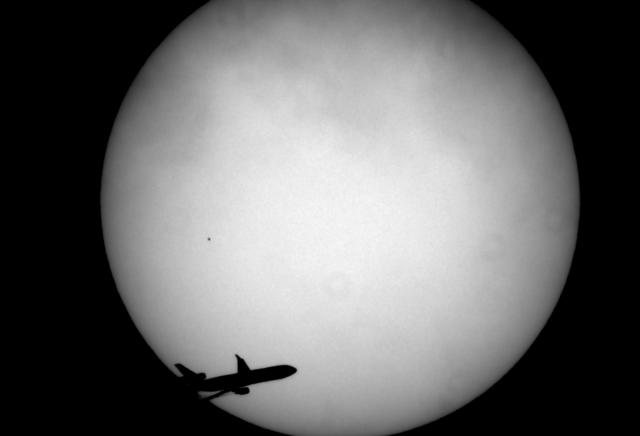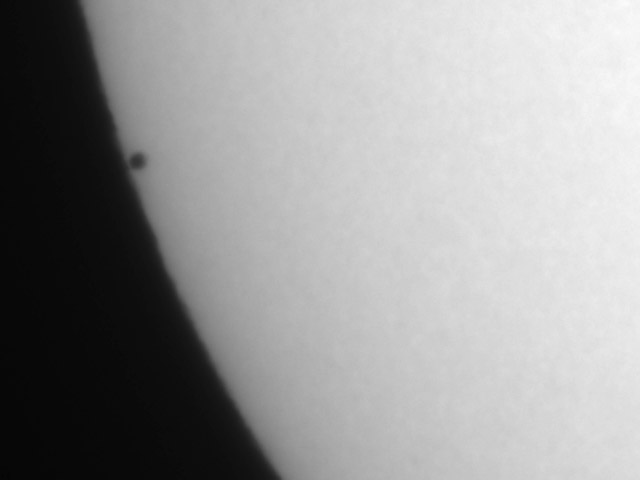Forum Replies Created
-
AuthorPosts
-
 Nick JamesParticipant
Nick JamesParticipantBefore 2I all of the comets that we know with very slightly hyperbolic orbits acquired the extra velocity through planetary perturbations when they were in the inner Solar System. We would expect comets falling in from the Oort cloud to be in parabolic orbits, i.e. have a velocity of zero at infinity. The largest eccentricity known prior to 2I was 1.057 for C/1980 E1 (Bowell). This large excess velocity (around 3.8 km/s) was acquired from a Jupiter encounter in 1980 December. Comet C/1956 R1 (Arend-Roland) had an exit eccentricity of 1.0002. The pre-perihelion eccentricity was indistinguishable from parabolic. The ultimate end for our comets is to either fall into the Sun or be ejected from our Solar System and become an interstellar comet for some one else.
 Nick JamesParticipant
Nick JamesParticipantAt least when Peter Dunsby discovered Mars (AT 11448 here) he was presented with a nice certificate.
 Nick JamesParticipant
Nick JamesParticipantAs you say, that’s minor planets. Perhaps we should send them a link to Dominic’s site: https://in-the-sky.org/data/planets.php
 Nick JamesParticipant
Nick JamesParticipantSeriously, if an amateur did this they would be crucified although at least we are trusted to post discoveries on TNS. We are not allowed to post to The Astronomer’s Telegram since we can’t be trusted to get things right on our own. I’d be interested to know what checking the MASTER team do before posting their discoveries. Checking for moving objects like asteroids and planets is pretty basic stuff. It would be nice to see a comment on TNS from one of the authors explaining what went wrong but so far nothing.
 Nick JamesParticipant
Nick JamesParticipantPossibly. It could have been an aircraft I suppose but the faint residual image in the next frame looks like a decaying train.
 Nick JamesParticipant
Nick JamesParticipantWell done them. You’d have thought that one of that almost infinitely long list of authors might have checked…
 Nick JamesParticipant
Nick JamesParticipantThat sounds like a fun thing to do although recovering your expensive kit might be challenging. There are rules about launching high altitude met balloons in the UK and a useful FAQ here in case anyone wants to have a go.
22 November 2019 at 7:08 am in reply to: Prediction of high activity of alpha Monocerotid shower #581628 Nick JamesParticipant
Nick JamesParticipantRotten weather here in Chelmsford although my cameras caught a few meteors last night during short gaps in the cloud. There were only small gaps in the cloud at the predicted time of the storm and nothing was picked up then.
 Nick JamesParticipant
Nick JamesParticipantAt 13:47:19. Is it an MD-11?

 Nick JamesParticipant
Nick JamesParticipantLots of showers this morning and a load of clouds around. The seeing is awful and it is blowing a gale but I was lucky at first contact here in Chelmsford. Here is a frame from my video taken at 2019-11-11T12:37:33.
Here’s the animated GIF of first and second contact.

 Nick JamesParticipant
Nick JamesParticipantDavid. Excellent. I can breath easy now.
 Nick JamesParticipant
Nick JamesParticipantYes, 13.4 tonight and moving along at almost 18 arcsec/min.
 Nick JamesParticipant
Nick JamesParticipantHere’s a quick animation I obtained tonight while waiting for it to get dark. These are 10s exposures. 33×22 arcmin field, N up.
 Nick JamesParticipant
Nick JamesParticipantThat is a lot of objects to track and control too.
 Nick JamesParticipant
Nick JamesParticipantThanks. Here’s a short movie taken a little later when it had cleared up. Still a very bright Moon in the sky.
 Nick JamesParticipant
Nick JamesParticipantThanks for the reminder. That’s a great movie. It is cloudy here in Chelmsford at the moment but I did have a few gaps earlier and caught the trail. It is currently around mag 15.3 moving at 7 arcsec/min.
 Nick JamesParticipant
Nick JamesParticipanthttps://openphdguiding.org/man-dev/Tools.htm#Comet_Tracking
Although I have never used this myself…
 Nick JamesParticipant
Nick JamesParticipantWell, given the position, it is possibly Leda but I don’t think you could be sure unless you had multiple stacks which showed the blob moving at the correct rate. If you try this in future you will want to get a long enough series of subs that you can make two separate stacks, each of which have enough SNR to get astrometry of the object. Once you have confirmed it by its motion you can always stack the whole set to get a higher SNR. That’s what I did with this faint comet which was about the same magnitude as Leda.
 Nick JamesParticipant
Nick JamesParticipantGood try Paul but that’s the trouble with faint objects in busy starfields! When you say it is “in about the right place” could you quantify in terms of arcsec? Leda’s ephemeris will be very good. Normally, in cases like this, you would produce two stacks at different times and check that the object’s motion is consistent with the ephemeris. You may not have enough subs to do this in which case the identification will always be iffy.
 Nick JamesParticipant
Nick JamesParticipantTry this:
http://www.nickdjames.com/astrolinux/utils_ubuntu18.tgz
The tools are all dynamically linked so you will need the libraries but they are all available for Ubuntu. I think the following should get them all:
apt install libcfitsio-dev
apt install libgd-dev
apt install libnetpbm10-dev
apt install wcslib-devNick.
-
AuthorPosts
